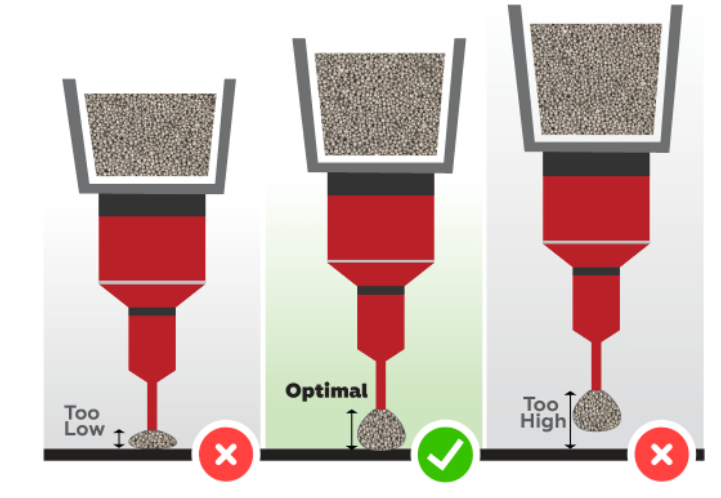The Application of Dispensing Process
The Application of Dispensing Process
1. The Application of Dispensing Process
1.1 Underfill
The miniaturization of chips in electronics is becoming increasingly popular, while it causes solder joint reliability issues. Components and substrates are soldered with solder paste, but the solder joints in small size are more susceptible to stress and fall off. Hence, an underfill process was introduced. In this process, underfill is applied to one side of the solder joints by dispensing, and all solder joints are filled under capillary effect. Underfill can also effectively reduce uneven stress and solder joint failures caused by thermal expansion coefficient mismatches, which are used extensively in electronic packaging.

Figure 1: Underfill dispensing process
1.2 Solder Dot Generation
Similar to printing technology, dispensing technology is widely used to create solder dots on pads. Epoxy solder paste is usually contained in a syringe and released onto a pad under the pressure of the dispenser. The difference is that dispensing is contactless, which does not require a stencil. Dispensing machines include semi-automatic and fully automatic. The parameters such as solder release amount and dispensing time of the fully automatic dispensing machine are more adjustable, which can benefit the large-scale dispensing process. A variety of dispensing systems are currently available, including pneumatic, jet, metered, and screw types.
2. The Keys for High-Quality Dispensing
u The diameter of the dispensed solder spot should be half the pitch of the pads. It ensures a sufficient amount of solder paste to bond the components, while no excessive solder causes waste and pad contamination.
u The epoxy solder paste should not contain air. Otherwise, it will cause uneven dispensing and produce voids in the solder joints. Therefore, the syringe should be kept sealed when dispensing is suspended.
u The inner diameter of the needle must be at least five times the size of the solder particle to effectively reduce clogging problems. The relationships between the solder paste particle sizes and needle sizes are shown in the following table.

u It is necessary to maintain proper dispensing pressure. Excessive pressure will result in a large amount of solder paste output and easily cause the separation of syringe and needle, leading to a blockage. If the pressure is too low, the problem of uneven dispensing will occur.
u An appropriate viscosity of epoxy solder paste is essential. The epoxy solder paste should be fully warmed before use. It is generally stored in a refrigerator at 0-10°C. If the temperature is too low, the solder viscosity will decrease, which reduces the solder release smoothness. If the temperature is excessively high, the solders will dry out, and the adhesion decreases.
u The distance between the needle and the pad needs to be calibrated repeatedly to avoid position deviation. A low distance is easy to cause the needle blockage, while a long-distance increases the difficulties of solder paste release.

Figure 1: The influences of dispensing heights
Fitech provides packaging materials such as solder paste/epoxy solder paste for dispensing. Welcome for consultation.

















 Back to list
Back to list



